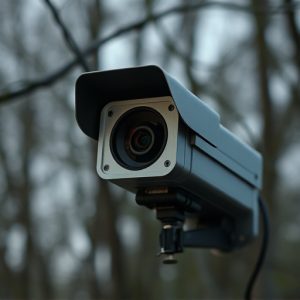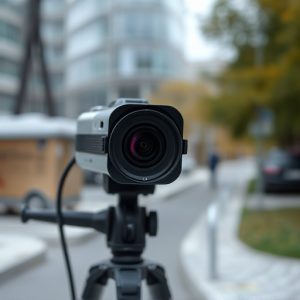Hidden Cameras in Rentals: Spotting Secret Surveillance Devices
Installing hidden cameras in rental properties navigates a complex legal landscape where landlords m…….
Installing hidden cameras in rental properties navigates a complex legal landscape where landlords must balance security with tenant privacy. While common areas may accommodate surveillance, placing them in private spaces like bedrooms or bathrooms is illegal and controversial. For businesses, checking local regulations, informing tenants, and disclosing camera use is essential to avoid legal issues. With technology advancing, identifying hidden cameras in public-looking spaces requires vigilance, especially when discussing sensitive matters or leaving belongings unattended. Effective monitoring should be transparent, proportionate, and conducted with resident consent, fostering a harmonious landlord-tenant relationship while respecting privacy rights.
In today’s digital age, hidden camera locations in rental properties have become a growing concern. While landlords aim to ensure property security, secret surveillance devices in tenant spaces raise serious ethical and legal questions. This article delves into the intricacies of hidden camera placement, focusing on common areas often targeted, unsuspecting spots favored by landlords, and the ethical considerations that highlight tenant privacy rights. We also explore detection methods for identifying surreptitious recording equipment, providing insights crucial for both tenants and businesses alike.
- Understanding Legal Implications of Hidden Cameras in Rentals
- Common Areas Often Traped by Secret Surveillance Devices
- Unsuspecting Places Landlords Use for Camera Placement
- Ethical Considerations and Tenant Privacy Rights
- Detection Methods to Identify Surreptitious Recording Equipment
Understanding Legal Implications of Hidden Cameras in Rentals
In many jurisdictions, installing hidden cameras in rental properties is a complex legal matter. Landlords must navigate a fine line between ensuring property security and respecting tenant privacy. While some locations are considered acceptable for hidden camera deployment, such as common areas or entry points, placing them in private spaces like bedrooms or bathrooms is highly controversial and often illegal. Tenants have the right to expect a certain level of privacy within their rented accommodations, and any violation can lead to legal repercussions.
Landlords who opt to use hidden cameras for business purposes, like deterring theft or monitoring property maintenance, should be aware of local regulations and inform tenants about surveillance measures in advance. Transparency is key; landlords must disclose the presence of cameras and their intended use to avoid potential legal issues and maintain a fair rental relationship with residents.
Common Areas Often Traped by Secret Surveillance Devices
In many rental properties, common areas like hallways, lobbies, and parking lots are often overlooked during standard security checks, making them prime targets for secret surveillance devices. Landlords or unauthorized individuals may install hidden cameras in these areas to monitor activities, which raises significant privacy concerns for tenants. Such locations, while seemingly public, can capture intimate conversations, personal interactions, and sensitive information, posing a threat to the privacy rights of those who call these spaces their temporary homes.
Hidden camera locations for businesses, including common areas in rental properties, have become a growing concern due to advancements in technology. These devices can be disguised as everyday objects like light bulbs, smoke detectors, or even seemingly innocuous decor, making them nearly undetectable. Tenants should be vigilant and aware of potential hidden surveillance, especially when discussing sensitive matters or leaving personal belongings unattended in these areas.
Unsuspecting Places Landlords Use for Camera Placement
Landlords and property managers often employ sophisticated methods to ensure they have complete visibility within their rental properties, sometimes in the most unexpected places. While some may argue that this is a necessary measure for security and maintenance, it raises concerns about privacy, especially when tenants are unaware of these hidden surveillance spots.
Unsuspecting locations like smoke detectors, air conditioning units, or even seemingly innocuous decorations can double as hidden camera locations. These devices are strategically placed to capture sensitive information, potentially including private conversations and activities within the rental space. In today’s digital era, where technology is easily accessible, it’s crucial for tenants to be vigilant and aware of potential hidden camera locations for business purposes, ensuring their privacy rights are not infringed upon.
Ethical Considerations and Tenant Privacy Rights
The installation of hidden cameras in rental properties raises significant ethical questions and concerns regarding tenant privacy rights. While landlords may have valid security interests, particularly in commercial settings where hidden camera locations for business operations are established, it’s crucial to balance these needs with the right to privacy. Tenants expect their living spaces to be secure and private, and any surveillance measures should be conducted with transparency and within legal boundaries.
Unlawful placement of cameras can lead to severe breaches of trust and potential legal repercussions. It’s essential for landlords to understand and adhere to tenant privacy laws, ensuring that any monitoring is justifiable, proportionate, and carried out in common areas or with the consent of residents. Striking a balance between security and privacy is key to maintaining a harmonious relationship between landlords and tenants.
Detection Methods to Identify Surreptitious Recording Equipment
Hidden cameras, often placed in rental properties without tenants’ knowledge, have become a growing concern for privacy advocates. Detecting these surreptitious recording devices requires a combination of technological expertise and keen observation. One common method involves using specialized thermal imaging cameras, which can reveal unusual heat signatures indicative of hidden electronics. Additionally, magnet meters are utilized to scan metal objects that might be attached to walls or ceilings—common spots for covert cameras.
Tenants should also look out for peculiar installations like USB ports hidden behind furniture or odd wiring. Advanced detection tools, such as radio frequency (RF) detectors and infrared (IR) scanners, can further aid in identifying hidden recording devices. It’s crucial to be aware of potential hidden camera locations for business scenarios, not just in your own space but also when renting, to ensure a safe and private environment.
In the pursuit of safety and security, it’s crucial to balance landlord interests with tenant privacy rights. While hidden camera locations for business purposes may offer legitimate protections, their clandestine nature raises ethical concerns. Understanding the legal implications and detecting surreptitious recording equipment are essential steps in navigating this complex issue. By being aware of common areas and unsuspecting places where cameras might be placed, tenants can better protect their privacy and ensure a safe living environment.


